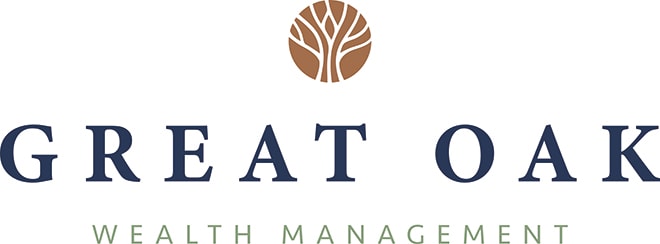A defined benefit plan, or pension plan, provides a guaranteed benefit at the participant’s retirement. Pension plans are a dying breed. In a small business, they are almost non-existent. Don’t disregard the defined benefit pension plan for the right kind of small business. It’s a shrewd move.
After my last post, Small Business Retirement Plans – What You’re Missing, which focused on defined contribution plans, I received some questions about defined benefit pension plans, so I figured it was time to give some love to the much-maligned pension plan.
Let’s cut to the chase. If you are a small business with more than 3 or 4 employees, a defined benefit plan is probably not for you unless it’s a 100% family-operated business. Defined benefit plans are created for all firm employees, not just owners, and that can get expensive. The defined benefit pension plan works best for sole proprietors or partnerships with few, if any, employees.
The benefit in the defined benefit plan
- The plan is set up to provide an annual retirement benefit, either a specific dollar amount or percentage of compensation, to owners/employees or their beneficiaries. The annual retirement benefit cannot exceed the lesser of 100% of the participant’s average compensation for his/her highest three consecutive calendar years, or $280,000 (2025).
- It is also based on a predetermined retirement age, usually 65. You don’t have to retire at 65, but the plan assumes you will begin receiving payouts at 65 for calculation purposes.
The nuts and bolts
Here’s where it gets tricky. This is one of the rare times when I have no specific figure or limit to give you. The allowable/required contribution depends on several components. Here are a few:
Your age & life expectancy: The calculation is based on the number of years until retirement and your life expectancy. In other words, how many years you’re expected to receive payments?
Income & predetermined retirement benefit: This is determined when the plan is set up. It could be between 1% and 100% of current income in retirement, within the limits mentioned above. That’s a wide range to determine the contribution required.
Investment performance: The contributions are invested. Calculations are based on an assumed investment return. Each year, that assumption is compared to the actual return. That affects the annual contribution required. Prudence dictates that defined benefit plan investments should be conservative.
It takes a rocket scientist
Well, not really, but it does take an actuary. This calculation is not something you can do on your own. The abovementioned components and a few others are calculated to determine your contribution. An actuary must annually analyze the data to determine the required contribution.
A pension is a serious commitment
The plan must be funded to a minimum level each year. If the business is not going well, it must still be funded. The defined benefit plan is easier to manage if there are only a few employees. The plan could even be reworked to lower the benefit if the minimum contributions cannot be made.
Why you would want a defined benefit plan
As I said, a defined benefit pension plan is an excellent move for the right small business. The fewer employees you have, the greater the flexibility.
High contribution potential
The most significant factor in determining the allowable/required contribution amounts is the ages of you and your employees when the defined benefit plan is started.
Think about this: if you don’t begin a defined benefit plan until age 54, the contribution you could make to the defined benefit plan would be significantly more than if you’re 30. Of course, the number of years until retirement is much lower at 54. If you’re a sole proprietor and the only participant in the plan, your contribution could be almost $200,000, depending on your income.
Imagine if you had a few employees in their 50s when the plan started. That would take a big chunk of change to fund. That’s probably not what you have in mind.
You can have your cake and eat it too
A defined benefit plan isn’t an either/or retirement plan. If you would also like a defined contribution plan, such as a 401(k) plan, SEP IRA, or SIMPLE IRA, go right ahead. You can have both. Talk about turbo retirement savings. If you have the ability, there is the potential for some serious retirement savings.
If your income is high enough, you could sock away over $275,000 between a defined contribution and a defined benefit plan. Go ahead and daydream.
Good for the bottom line
All plan contributions are tax-deductible. So it’s not just suitable for retirement. It’s an excellent way to reduce your taxable income.
The Terminator
I said earlier that the defined benefit plan is a serious commitment that must be funded in sickness or health, for richer or poorer. That’s true, but a termination may be the best solution in certain circumstances. The most obvious is when a business cannot fund the plan. The other not-so-obvious times are:
- Let’s say you’re a sole proprietor and need to hire employees. The cost of funding the pension plan for the new hires may not be in your budget. The best move may be to terminate the pension plan, roll the funds into an IRA, and start a defined contribution plan to suit your needs better.
- When people hear the word pension, they think of monthly payments in retirement. That doesn’t have to be the case with a defined benefit plan. Often, small business owners terminate the pension plan when they retire and roll the benefit into an IRA. It can save expenses and give you control over distributions.
If you terminate a plan before it’s been opened for five years, the IRS will not take kindly to that. Specific steps must also be taken to terminate a plan. Do so carefully and with the blessing of your actuary.
The downsides
A defined benefit plan does cost more than implementing and maintaining a defined contribution plan. An actuary needs to run calculations to determine minimum funding levels for each employee every year. That is an added expense.
The plan must be fully funded every year. I know I went over some exceptions, like reducing your benefit or terminating the plan, but the goal of the defined benefit plan should be building a long-term retirement plan, which requires funding.
In the right situation, a defined benefit plan may be the perfect vehicle to ramp up your retirement savings. No, it’s not as well known as a 401(k), SEP IRA, or SIMPLE IRA, but it should certainly not be disregarded as a potential retirement option.
Please feel free to share with other small business owners with the buttons below!








